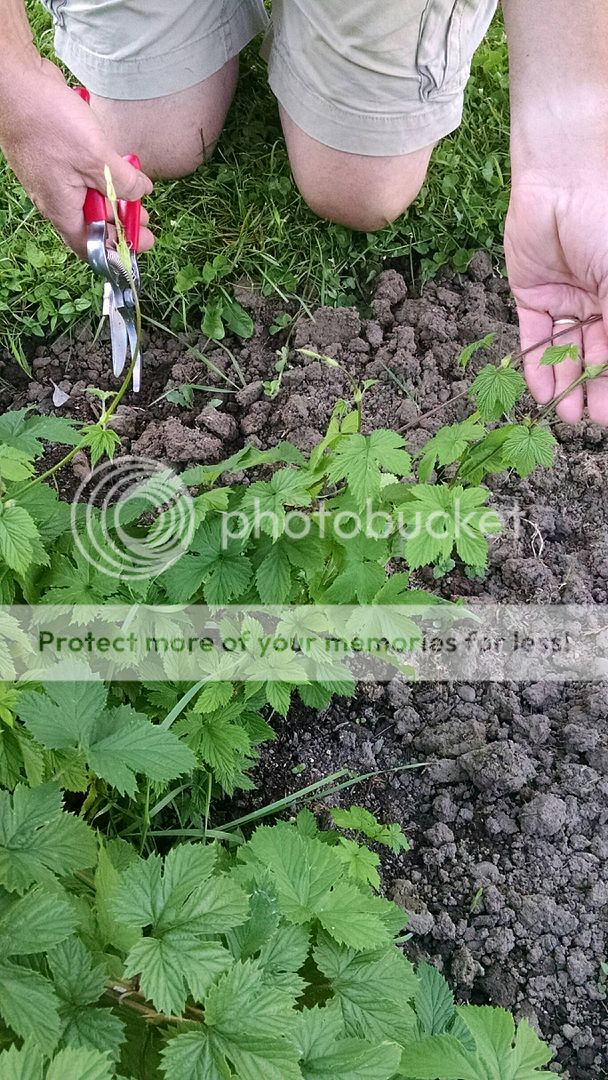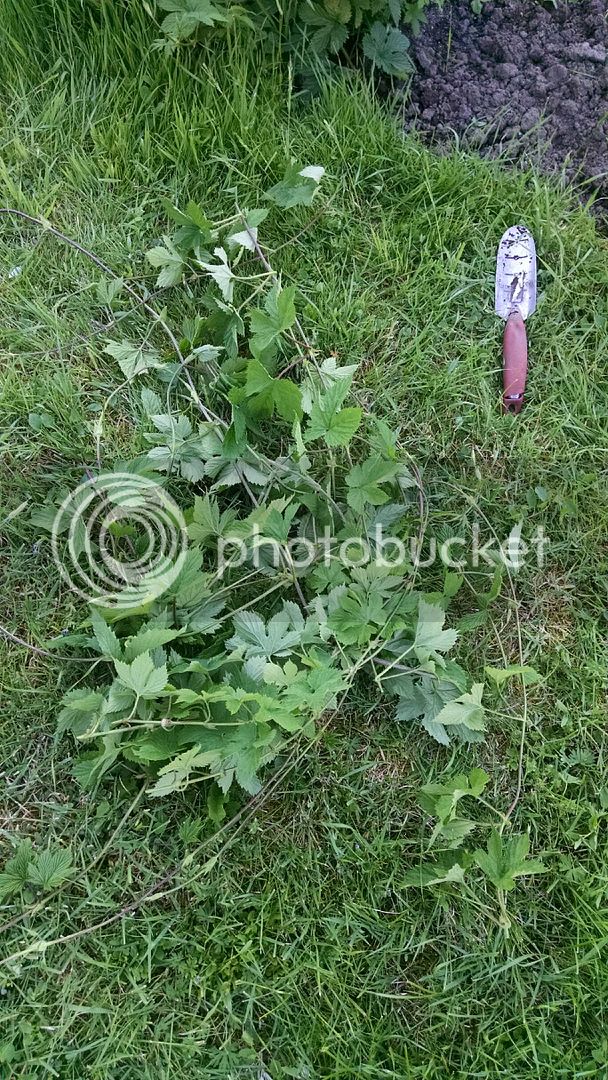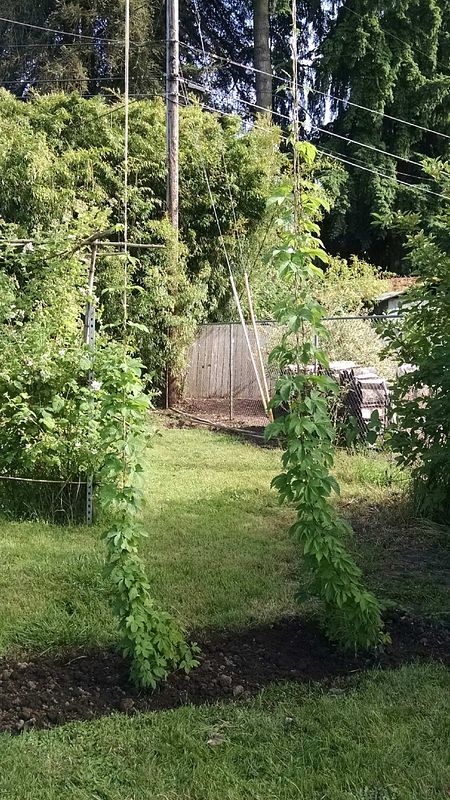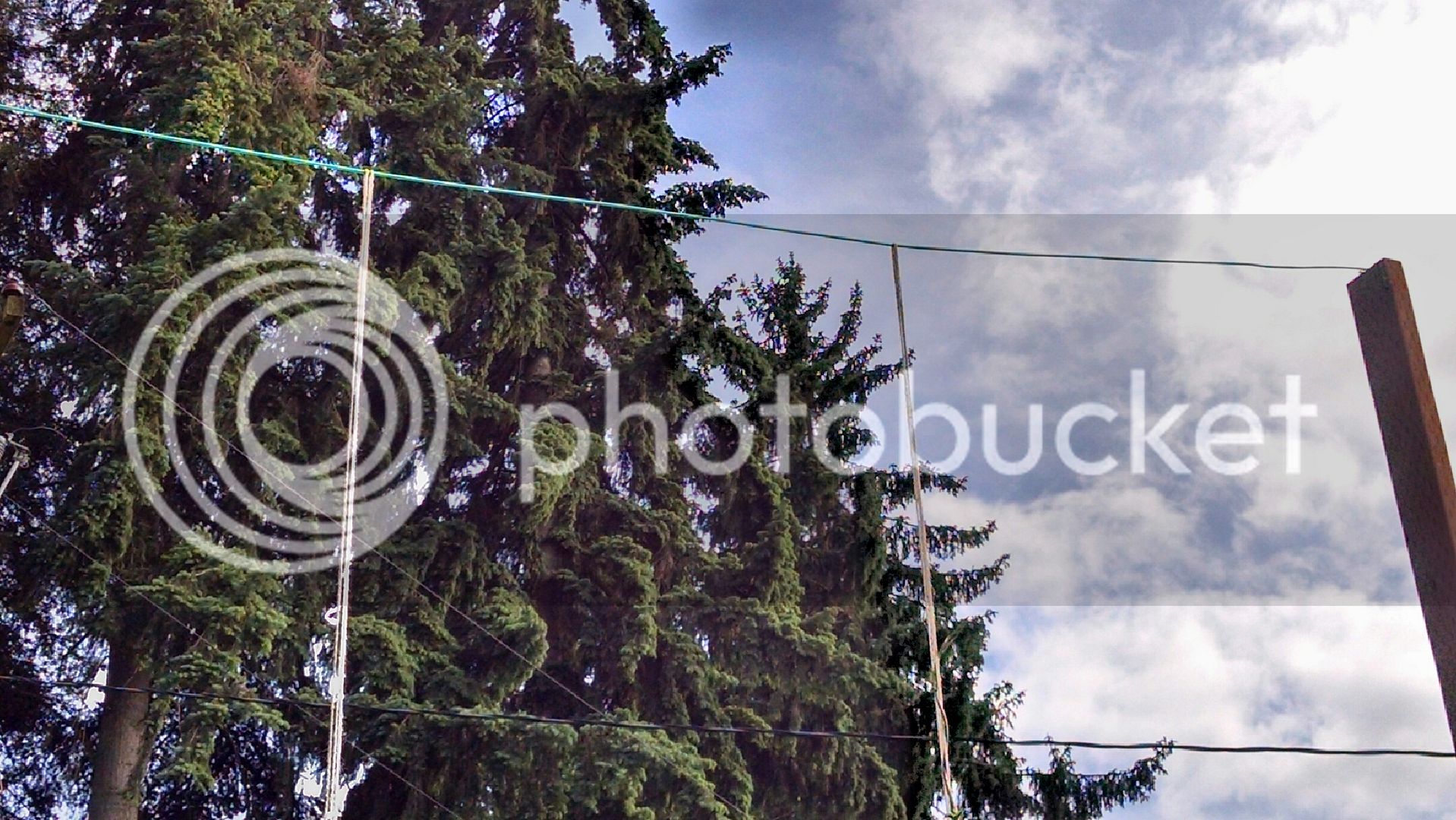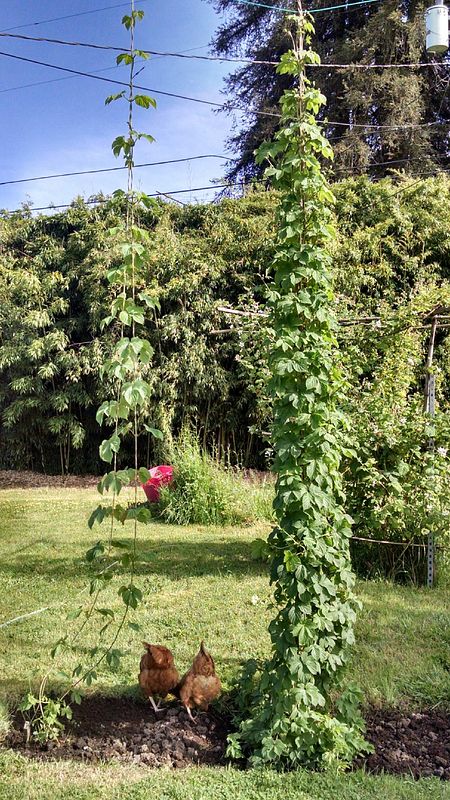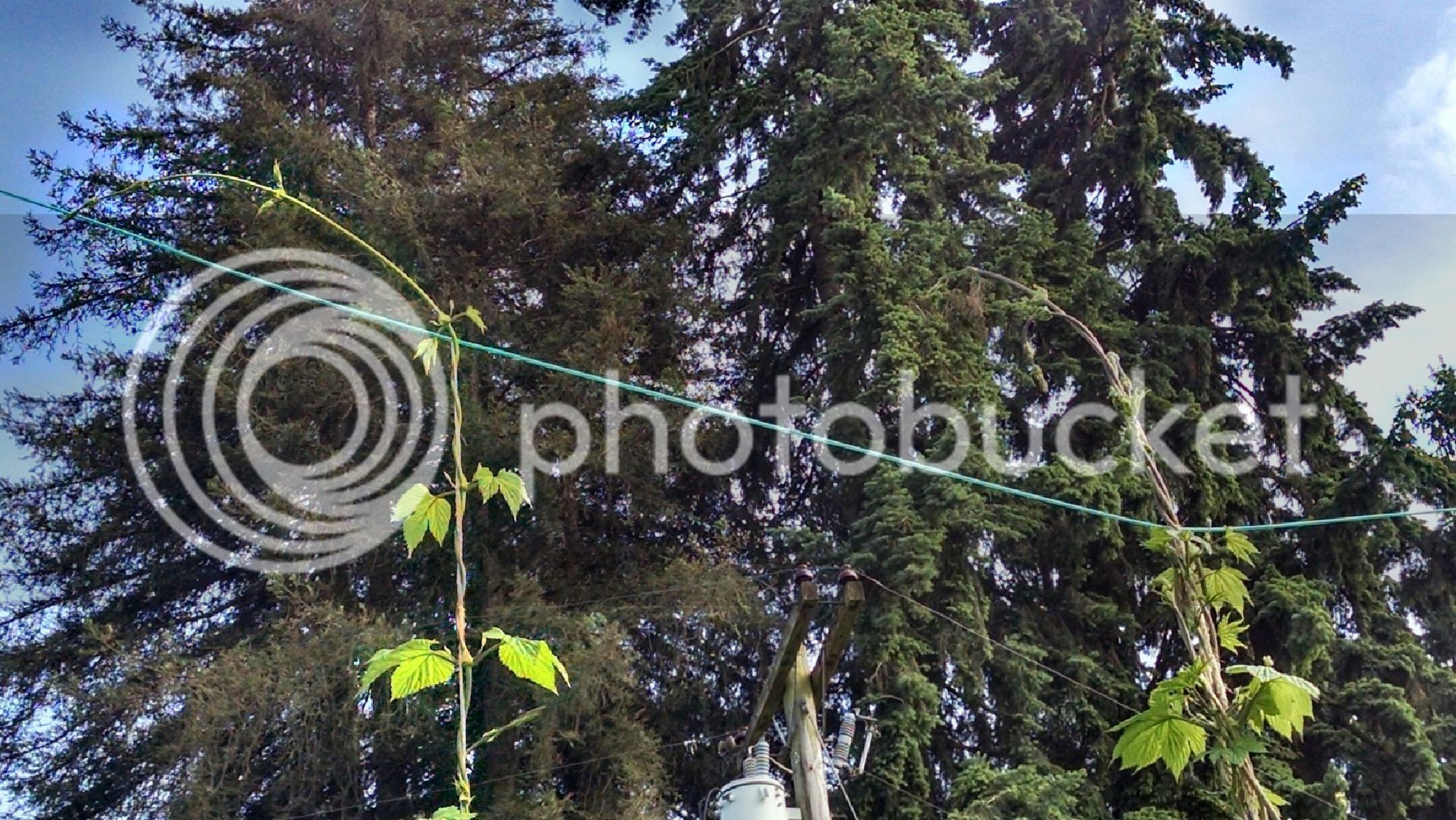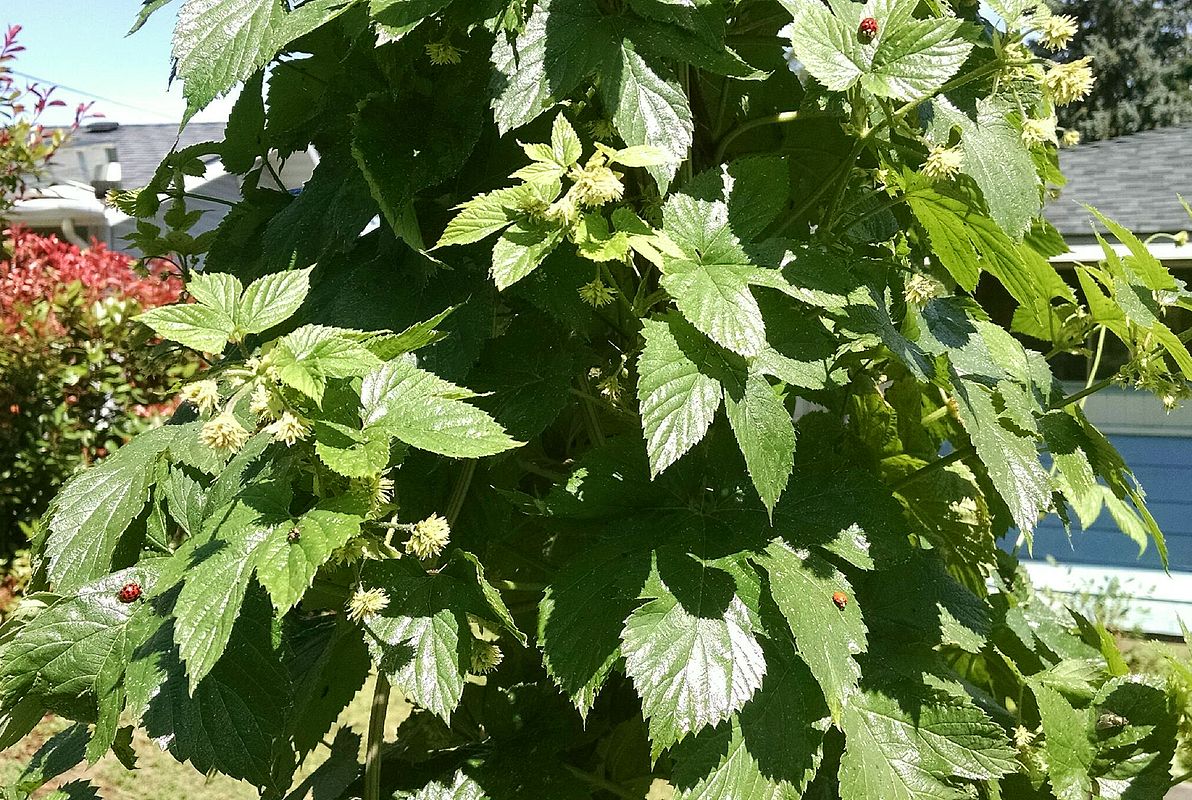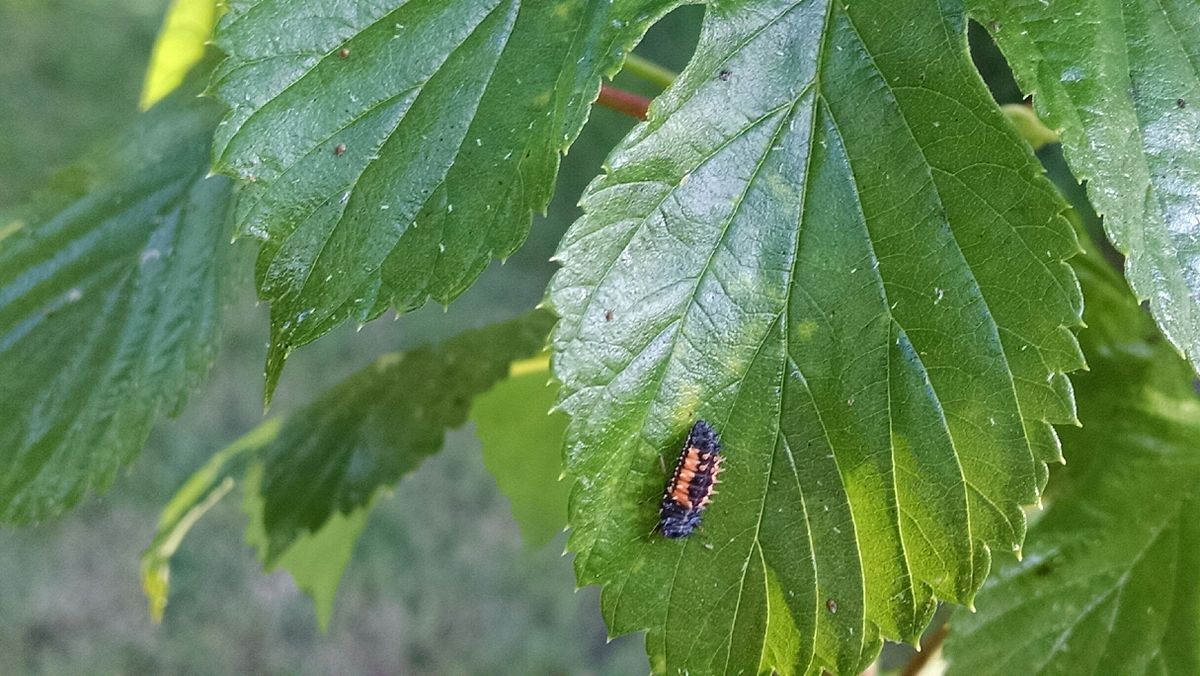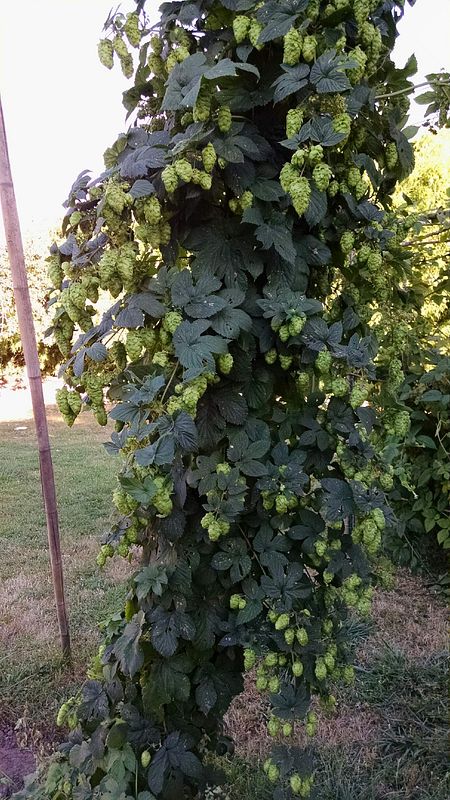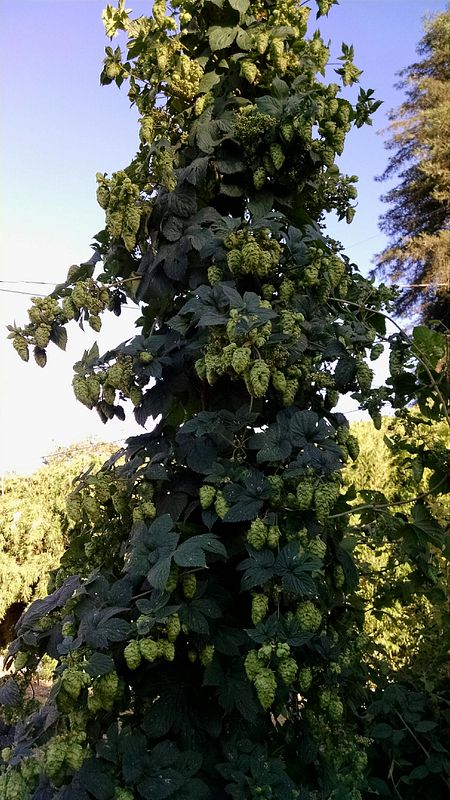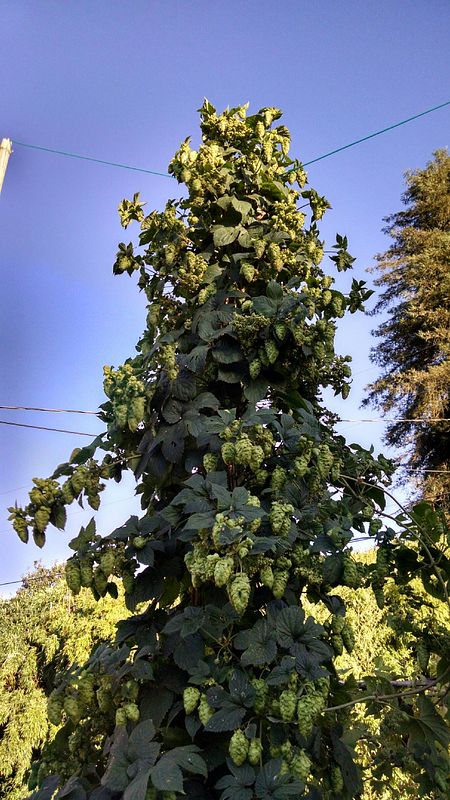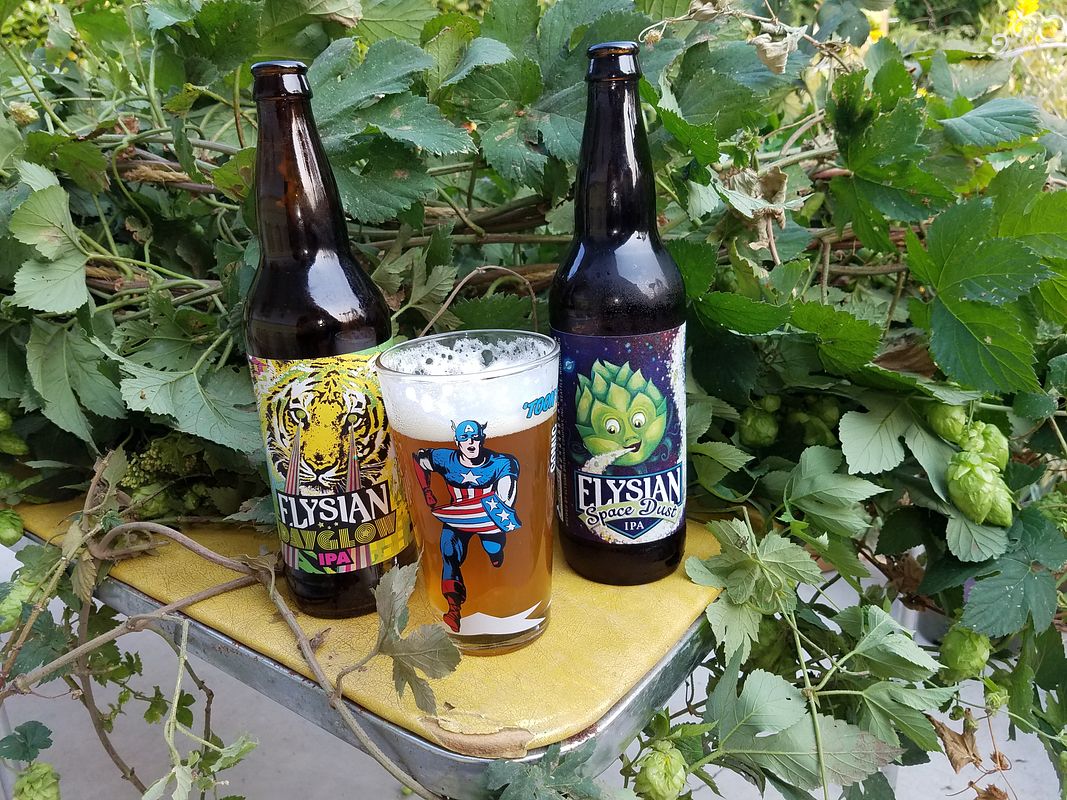You are using an out of date browser. It may not display this or other websites correctly.
You should upgrade or use an alternative browser.
You should upgrade or use an alternative browser.
My backyard hop situation
- Thread starter Senormac
- Start date

Help Support Homebrew Talk - Beer, Wine, Mead, & Cider Brewing Discussion Forum:
This site may earn a commission from merchant affiliate
links, including eBay, Amazon, and others.
Senormac
Well-Known Member
- Joined
- Nov 24, 2016
- Messages
- 282
- Reaction score
- 211
Then I noticed that there were LOTS of them on my plants. Mostly on the underside of the leafs. Many of them seemed to be connecting themselves there and changing into a cocoon state. Looking closer I saw that there were lots of aphids on the leaves also. You can see a number of them in the first and third pics. I started to get worried....
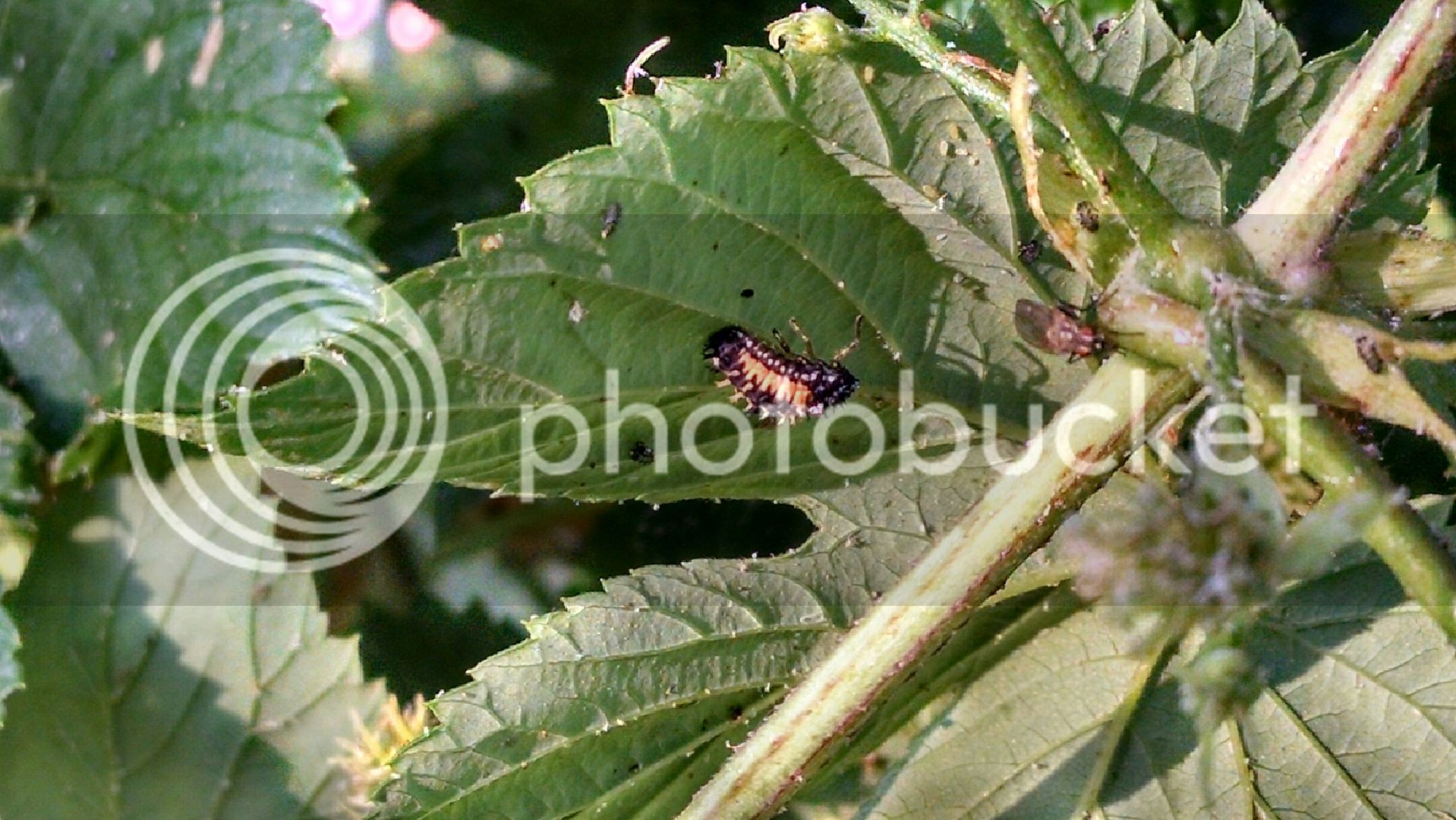
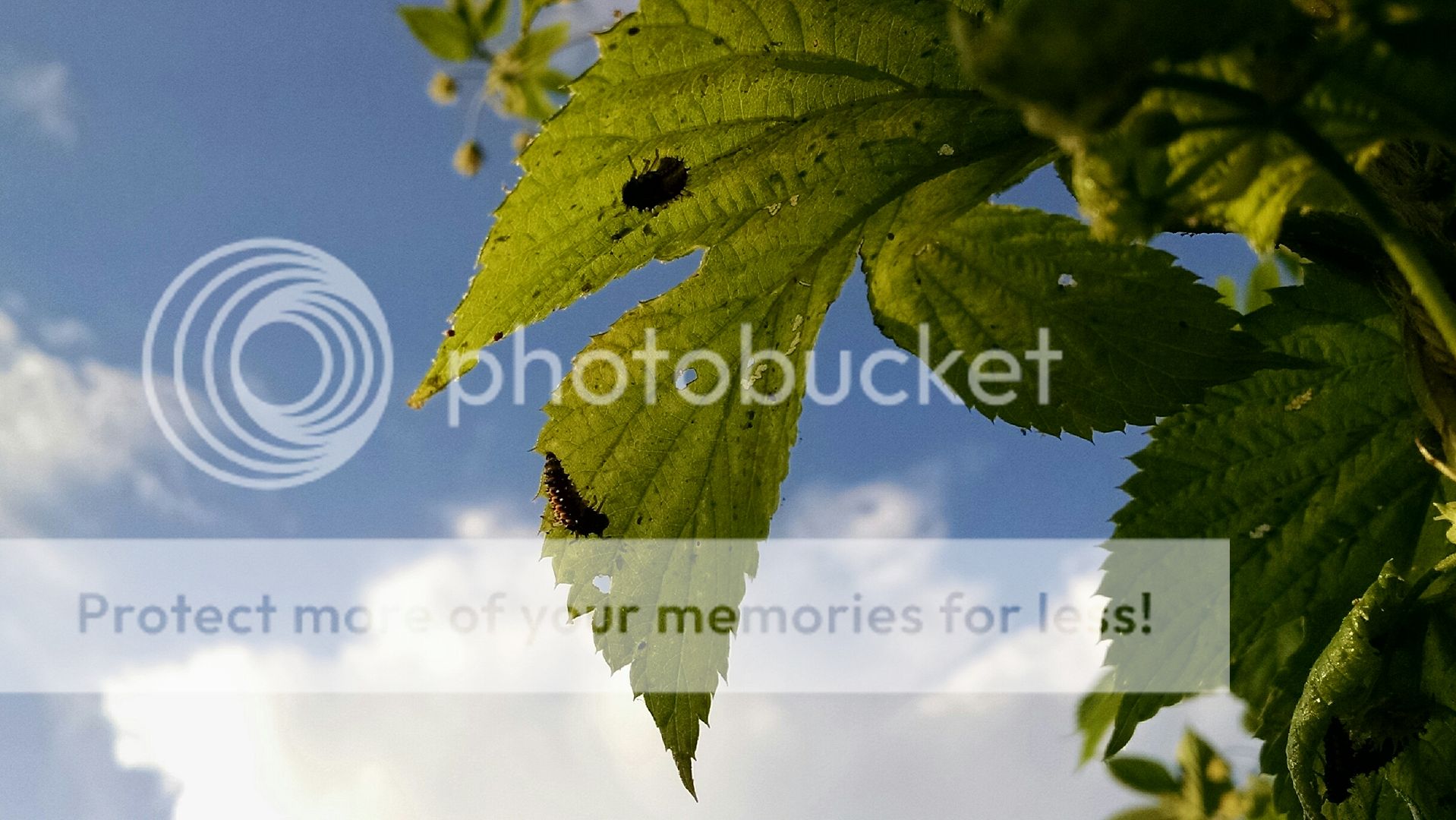
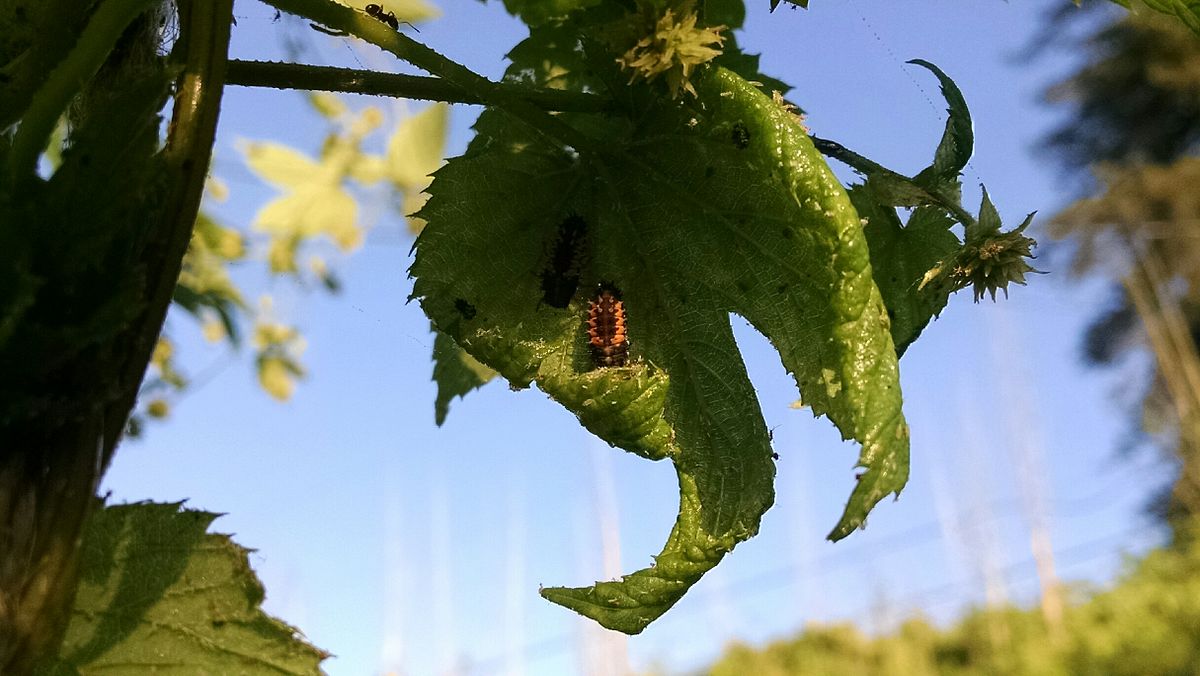



Senormac
Well-Known Member
- Joined
- Nov 24, 2016
- Messages
- 282
- Reaction score
- 211
After googling a few "hop insect pests" and not finding it, I tried......
ladybug larva
Woo Hoo !! It's like God sending the cavalry to help my plants !!
My EKG is getting huge and cones are not far off !!
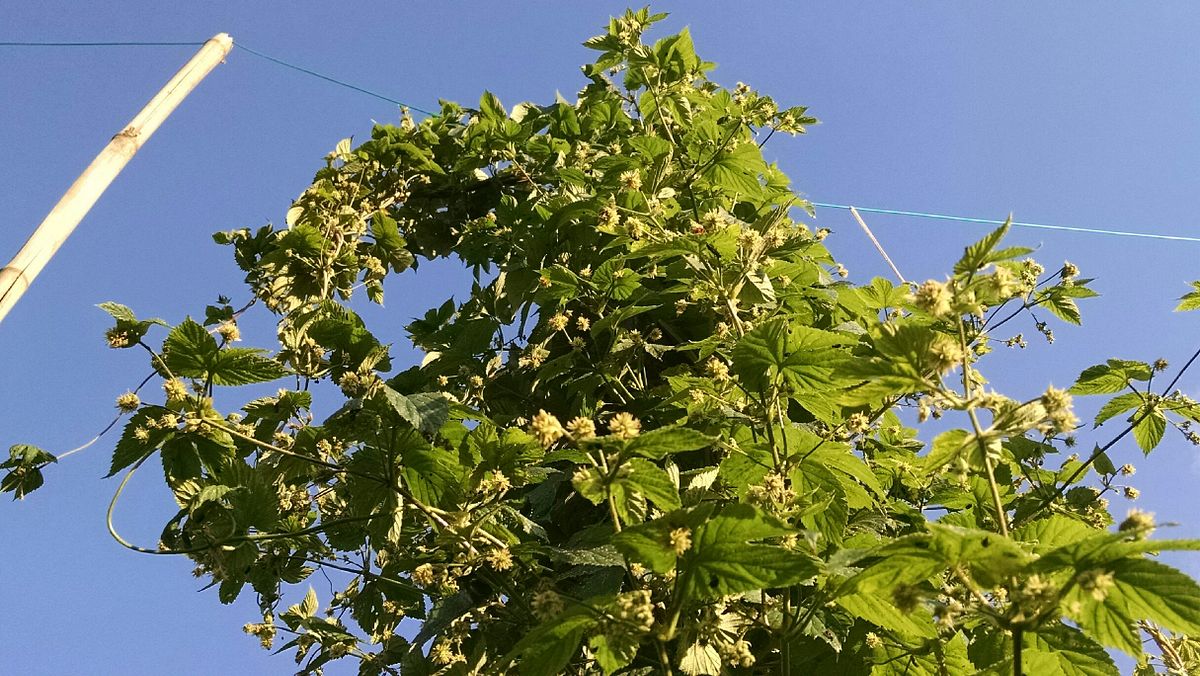
ladybug larva
Woo Hoo !! It's like God sending the cavalry to help my plants !!

My EKG is getting huge and cones are not far off !!


Senormac
Well-Known Member
- Joined
- Nov 24, 2016
- Messages
- 282
- Reaction score
- 211
Won't be too much longer before these will be ready for harvest. I've heard some people pick as the year progresses, but I usually wait till everything is at max and cut the whole growth down at once. Then the picking party happens 
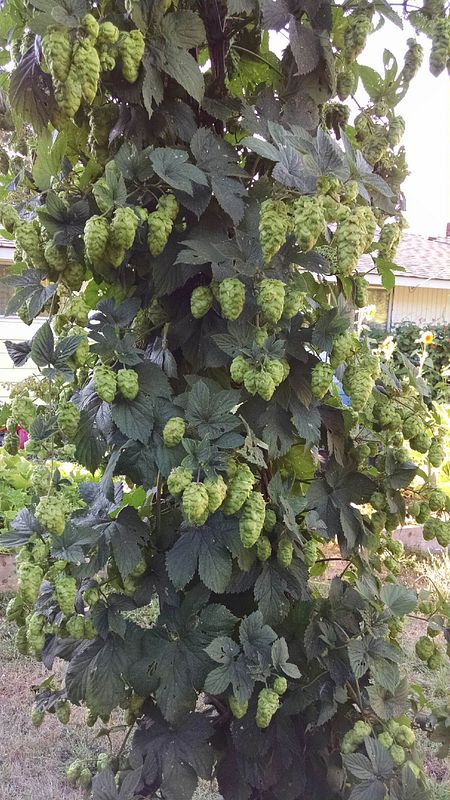
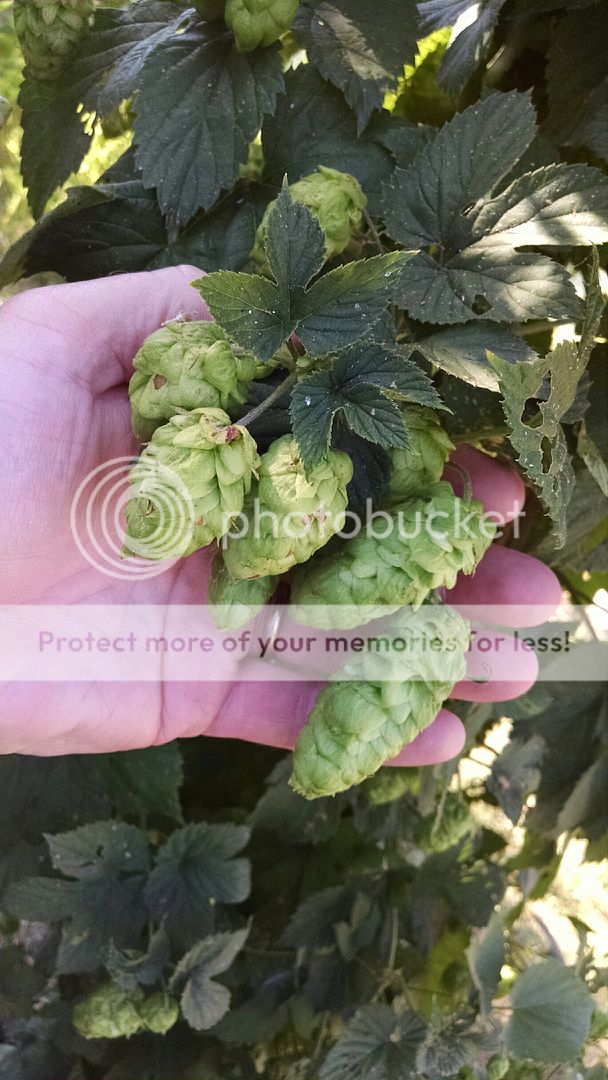


Great thread and some beautiful hops! I've got 6 varieties growing really well, all in their first year. 3 from rhizomes (Cascade, Chinook, and Crystal) and 3 from small starters (Mt Hood, Nugget, and Willamette). Cones are growing on Nugget and Willamette. I'm curious, when the season ends, should I cut the bines down from near the ground or should I let them be? Any advice would be great! Thank you!
Senormac
Well-Known Member
- Joined
- Nov 24, 2016
- Messages
- 282
- Reaction score
- 211
Great thread and some beautiful hops! I've got 6 varieties growing really well, all in their first year. 3 from rhizomes (Cascade, Chinook, and Crystal) and 3 from small starters (Mt Hood, Nugget, and Willamette). Cones are growing on Nugget and Willamette. I'm curious, when the season ends, should I cut the bines down from near the ground or should I let them be? Any advice would be great! Thank you!
thx

As to harvesting, I'm not sure what everyone does, but when I'm ready to harvest, I just cut them off about 4- 6 inches above the ground and take the whole pile of it over to a picking table on the patio. Usually, I'll let it set there for a day or so to give the bugs (if there be any) a chance to escape.
Lefou
Danged rascally furt
- Joined
- May 1, 2016
- Messages
- 2,300
- Reaction score
- 1,227
Very nice looking plants.
You're lucky to have the ladybugs around. If they don't stick around, another good remedy for aphids is neem oil - just don't apply when aphid predators are around.
You're lucky to have the ladybugs around. If they don't stick around, another good remedy for aphids is neem oil - just don't apply when aphid predators are around.
Those of you who use a dehydrator to dry your hops, what temp/length of time do you use?
Last year I did the air filter/fan method which seemed to work fine, but took a day+, so looking to turn it around a little quicker and more efficiently this time around possibly.
Last year I did the air filter/fan method which seemed to work fine, but took a day+, so looking to turn it around a little quicker and more efficiently this time around possibly.
SleepyCreekBrews
Well-Known Member
I have about 5 or 6 clumps of growth like this on my EKG. I guess they are seeds. I don't know if they have a use or not.
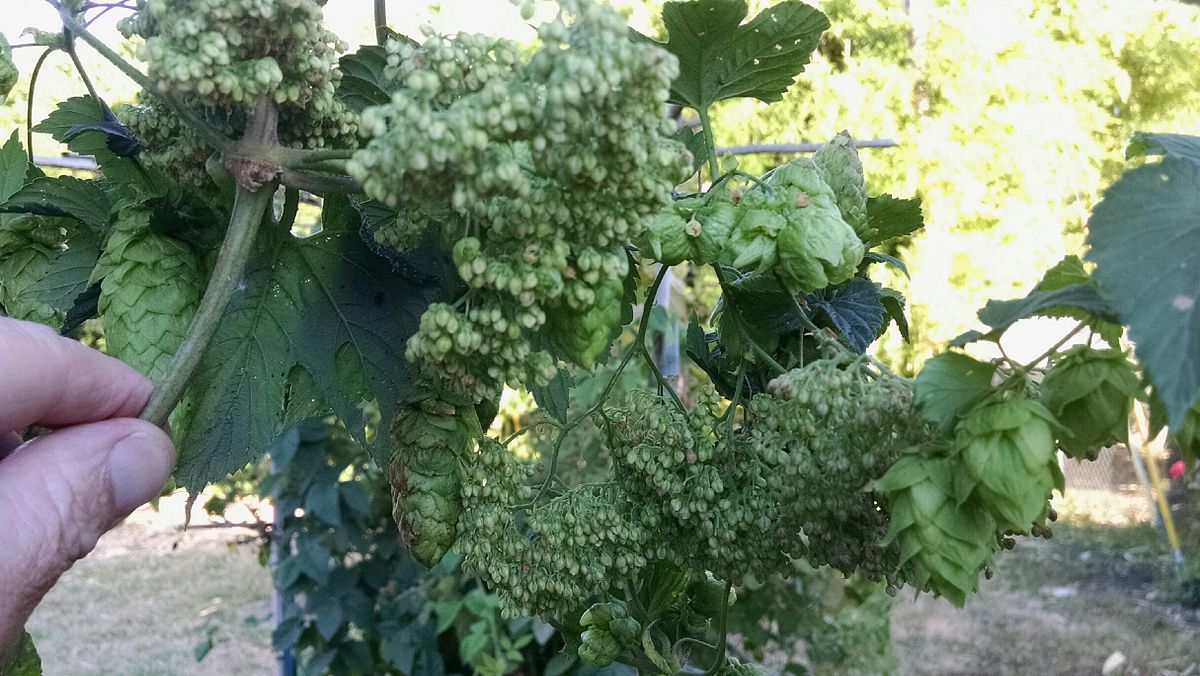
I noticed a clump of growth like that on my Columbus bines the other day too.
I assumed they're seeds as well, most likely infertile since there are no male plants around.
Northern_Brewer
British - apparently some US company stole my name
The Chinook absolutely refuses to take a break for winter, and puts up shoots year-round....grow so fast they forgot to make cones (I got zero last year).
The two are related. Hops are high-latitude plants, they need a few weeks of cold (ideally frost) in winter and long days in summer. In South Africa they could only grow hops on the very southern tip of the Cape until they developed day-length-neutral varieties. It looks like you're slightly closer to the equator so you're on the edge from that point of view. I guess whilst they are in pots you could put them in the fridge for a month in winter (perhaps not all at the same time, for the sake of domestic harmony....), and perhaps there's a nearby security light or streetlight at the new place that could be used to help persuade them that they are further north than they are?
Northern_Brewer
British - apparently some US company stole my name
This will be the third year for my Centennial, Chinook and Fuggles and the 6th year for my East Kent Golding.
Just to be picky - you can't grow East Kent Goldings in Oregon, it's like expecting to see the Brooklyn Dodgers in LA. In fact Goldings is a family of related varieties such as Amos Early Bird, Calais, Cobbs, Eastwell and Mathon.The "East Kent" bit refers to where they're grown, not the variety - it's a legally protected designation like Champagne or Scotch whisky, EKG can only come from one place (roughly east of a line from Maidstone to Dover).
I think it's the only example of a terroir being protected like that in the beer world, but there ought to be more - the same variety of hop can show differences between terroirs just as big as between Californian cabernet and Bordeaux, or Oregon pinot noir and Burgundy. The only example I can think of in the market is UK-grown Cascade, which is closer to its ancestral Fuggles (grown in the UK) than US-grown Cascade. Conversely I imagine Fuggles in California will turn out more Cascade-like.
On mildew, both powdery and downy - it's a big problem, particularly in the UK. Much of the breeding programme at Wye was devoted to looking for resistance as the traditional varieties are very susceptible to it. There's also been a lot of work on resistance to verticilium wilt which devastated the British acreage in the 1920s and Boadicea is advertised as the world's first aphid-resistant hop.
On height - Wye also pioneered "hedgerow" varieties of hop, starting with First Gold/Primadonna, which grow to about 7' (Boadicea is another). Summit was the first in the US, but since much the best use for green hops is as aroma/dry hops rather than bittering, it would probably make more sense to grow something like Azacca if you can get hold of it?
Senormac
Well-Known Member
- Joined
- Nov 24, 2016
- Messages
- 282
- Reaction score
- 211
Just to be picky - you can't grow East Kent Goldings in Oregon, it's like expecting to see the Brooklyn Dodgers in LA. In fact Goldings is a family of related varieties such as Amos Early Bird, Calais, Cobbs, Eastwell and Mathon.The "East Kent" bit refers to where they're grown, not the variety - it's a legally protected designation like Champagne or Scotch whisky, EKG can only come from one place (roughly east of a line from Maidstone to Dover).
Are you suggesting that I change the name of what I'm calling these to Central Oregon Golding hops ?
Pretty much, and I'm glad to see that the naming rights were awarded a year or so ago. I seem to recall reading that they were designated Golding (which could be grown anywhere), Kent Golding (which were grown in Kent), and EKG which were grown in East Kent. Germany is pretty similar as they historically named the hops after the region they were grown in, Hallertau, Hersbruck, Tettnang, Spalt etc. Also, I remember back in the early 90's that there were "BC Goldings". Friends in the industry mentioned that they were different than any other Goldings grown in N. America at the time so they made a point to state where they were grown.
Senormac
Well-Known Member
- Joined
- Nov 24, 2016
- Messages
- 282
- Reaction score
- 211
I didn't know that there was a movement to call hops by their location first. I haven't heard of anyone calling their plants El Paso Centennials or Lansing Cascades. Every hop plant is subject to the terroir of where they are being grown, the kind of rain that falls on them and the bugs that crawl on them.
What if you grew some EKG..... in East Kent, but had them in pots full of Florida swamp potting soil ? Would that make them NOT EKG's ?
What if you grew some EKG..... in East Kent, but had them in pots full of Florida swamp potting soil ? Would that make them NOT EKG's ?
Great thread and some beautiful hops! I've got 6 varieties growing really well, all in their first year. 3 from rhizomes (Cascade, Chinook, and Crystal) and 3 from small starters (Mt Hood, Nugget, and Willamette). Cones are growing on Nugget and Willamette. I'm curious, when the season ends, should I cut the bines down from near the ground or should I let them be? Any advice would be great! Thank you!
With first year hops most people leave the bines growing until the mid to late fall. As long as the leaves are green energy is going into the plant for the following year. Then cut about 4-6 inches above the crown.
Northern_Brewer
British - apparently some US company stole my name
Are you suggesting that I change the name of what I'm calling these to Central Oregon Golding hops ?
If you were trying to sell them, yes. But a wholesaler would probably just laugh at your attempts to premiumise them, and put them in the bin marked "Goldings" or at best "Goldings (US)".
In the garden, you can just refer to them by the variety name, which is just "Goldings" in the absence of anything more specific.
In practice Kent Goldings these days is used as a synonym for Mid-Kent, but I guess it could be used for hops from East Kent that fail the chemical tests for the EKG appellation, there's a couple of varieties like First Choice that are informally referred to as Goldings even though they're not. Mid Kent is not so good for hops, as the North Downs shield it from the beneficial effects of the North Sea - in wine terms think of Mid Kent as the Central Valley whereas East Kent is the Napa Valley or Russian River.
If you look at 19th-century brewing records, you'll see brewers buying in hops referred to as simply "East Kent" or "Mid Kent" - it's assumed that the former refers to Goldings and the latter to Fuggles (which originated in Mid Kent in the 1860s), but we'll never know for sure. The Hereford growers have responded to the EKG appellation by branding their hops, so you will occasionally see "Hereford Goldings" on labels from the more geeky British brewers, it's not common though.
Northern_Brewer
British - apparently some US company stole my name
I didn't know that there was a movement to call hops by their location first. I haven't heard of anyone calling their plants El Paso Centennials or Lansing Cascades. Every hop plant is subject to the terroir of where they are being grown, the kind of rain that falls on them and the bugs that crawl on them.
What if you grew some EKG..... in East Kent, but had them in pots full of Florida swamp potting soil ? Would that make them NOT EKG's ?
You don't grow EKG, you grow Goldings, as per above. And East Kent is something of an exception right now in having legal protection at the regional level, even if the country of origin is a bit more of a thing. There are certainly big differences at the country level - British hops have about 70% of the myrcene compared to the same hops grown in the US or NZ.
But the rules define EKG in terms of location, variety and certain biochemical markers, so if you had Goldings grown in pots of Florida soil, in Faversham say, and the chemical markers were right, then it would be East Kent Goldings.
Although soil is obviously part of terroir, the things that really seem to matter to hops are climate and in particular daylight length and intensity. That's all part of terroir too.
Senormac
Well-Known Member
- Joined
- Nov 24, 2016
- Messages
- 282
- Reaction score
- 211
Ok..... let it be known that hereafter I shall call that particular plant in my hop garden just "Goldings", although the title "Central Oregon Goldings" or "COG's" has a certain ring to it 

I hope there is nothing incorrect with my other bine being called Fuggles. I just like saying it

I hope there is nothing incorrect with my other bine being called Fuggles. I just like saying it
Last edited:
Northern_Brewer
British - apparently some US company stole my name
I hope there is nothing incorrect with my other bine being called Fuggles. I just like saying it
No, no, you're good on that front - although it was briefly known as Fuggle's Golding just to confuse everyone. The conventional history of it being introduced by a Richard Fuggle in 1875 is almost certainly wrong, Martyn Cornell delved into the real story here :
http://zythophile.co.uk/2014/12/23/notes-on-a-fuggle-more-light-on-the-early-history-of-a-great-hop/
With first year hops most people leave the bines growing until the mid to late fall. As long as the leaves are green energy is going into the plant for the following year. Then cut about 4-6 inches above the crown.
Thank you for your insight! So as I understand it, I should keep them growing as is until they stop growing and leaves start turning from their normal appearance? Then cut them 4-6 inches above crown in the ground?
rlmiller10
Well-Known Member
Those of you who use a dehydrator to dry your hops, what temp/length of time do you use?
Last year I did the air filter/fan method which seemed to work fine, but took a day+, so looking to turn it around a little quicker and more efficiently this time around possibly.
I set it about 95 or 100 degrees and 8 hrs will do it. But I also live in Colorado so it is very dry air.
Senormac
Well-Known Member
- Joined
- Nov 24, 2016
- Messages
- 282
- Reaction score
- 211
Well, it's Monday, eclipse day 2017. I have been checking my hops daily for a week, looking for brown, squishing the cones for that semi crinkly paper sound/feel and of course sensing the weather.
Yesterday, Sunday morning, I noticed a slight chill in the air and I knew it was time, so today after work, I began to cut down my Central Oregon Golding hops.
They were tall and full.

Yesterday, Sunday morning, I noticed a slight chill in the air and I knew it was time, so today after work, I began to cut down my Central Oregon Golding hops.
They were tall and full.

Senormac
Well-Known Member
- Joined
- Nov 24, 2016
- Messages
- 282
- Reaction score
- 211
The way I always harvest is just to cut down the whole of it all at once. Maybe others have different methods but I like to be done with it. It's very simple. I just cut the bines off a few inches above the ground, and then climb my ladder and cut the climbing twine and the bines that are attached at the crossing support wire

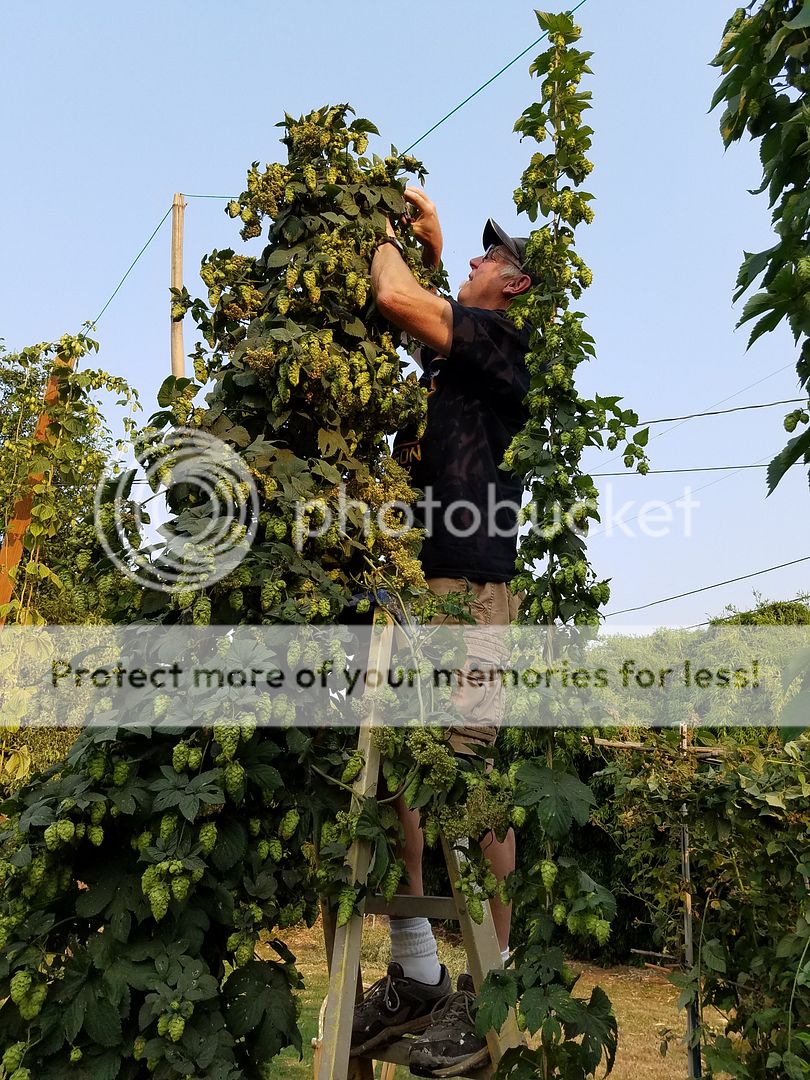


Senormac
Well-Known Member
- Joined
- Nov 24, 2016
- Messages
- 282
- Reaction score
- 211
Once they are free of connections bottom and top, I just drop them in a pile then gather them up and take them over to a couple folding tables I set up on the patio. The chickens dig this cuz any bugs that try to escape (mostly spiders and earwigs or pincher bugs ) get eaten up immediately.

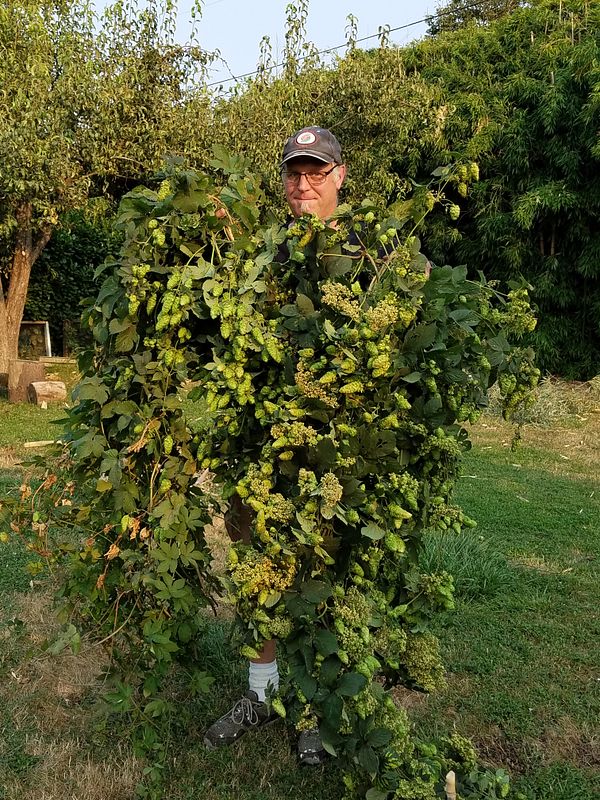
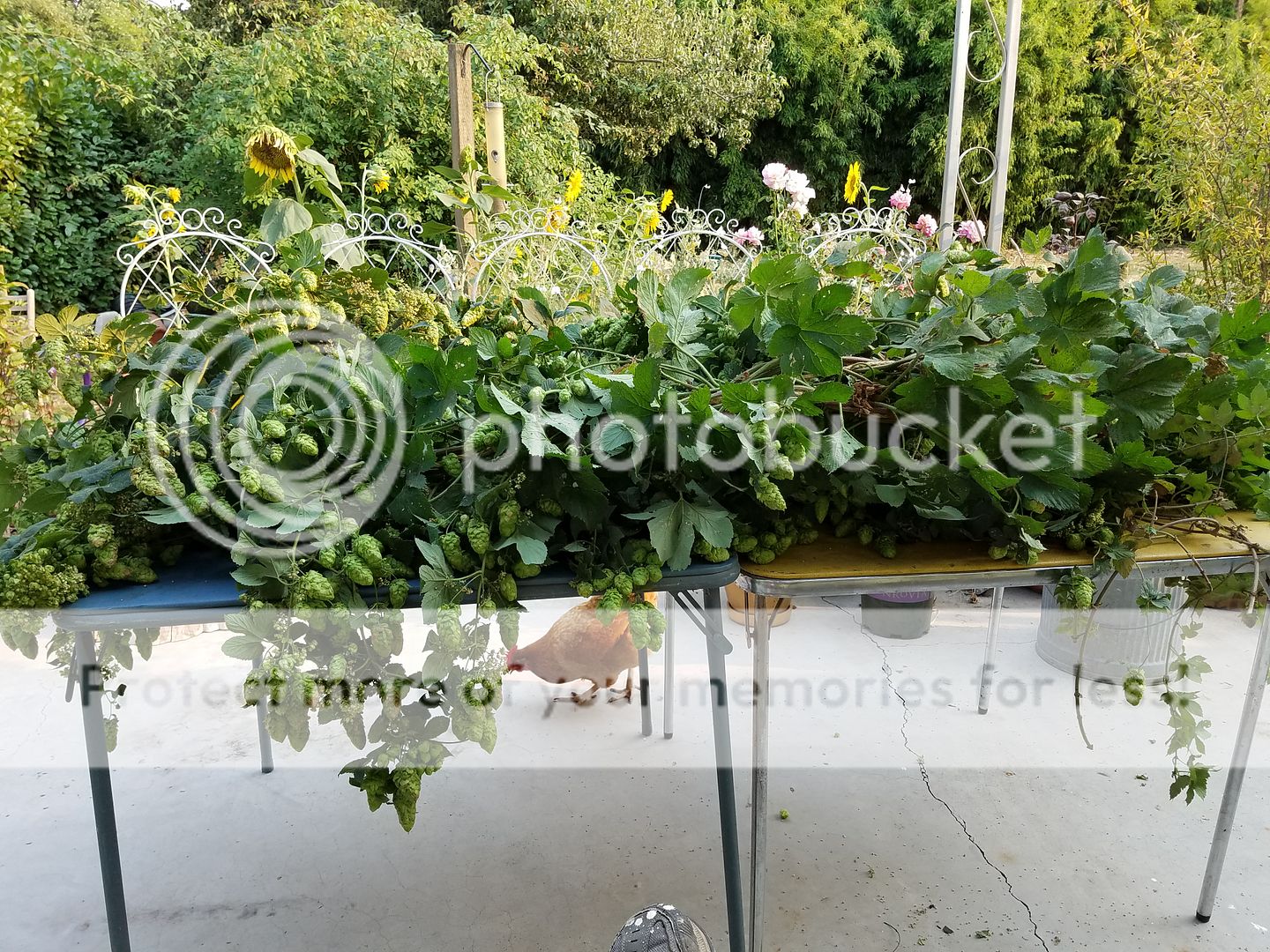



triethylborane
Well-Known Member
I noticed a clump of growth like that on my Columbus bines the other day too.
I assumed they're seeds as well, most likely infertile since there are no male plants around.
Those are male racemes, the plant could be a hermaphrodite.
That looks great Senormac! Thank you for all the information on this thread! Those cones look huge! How big are they?
Similar threads
- Replies
- 6
- Views
- 413

